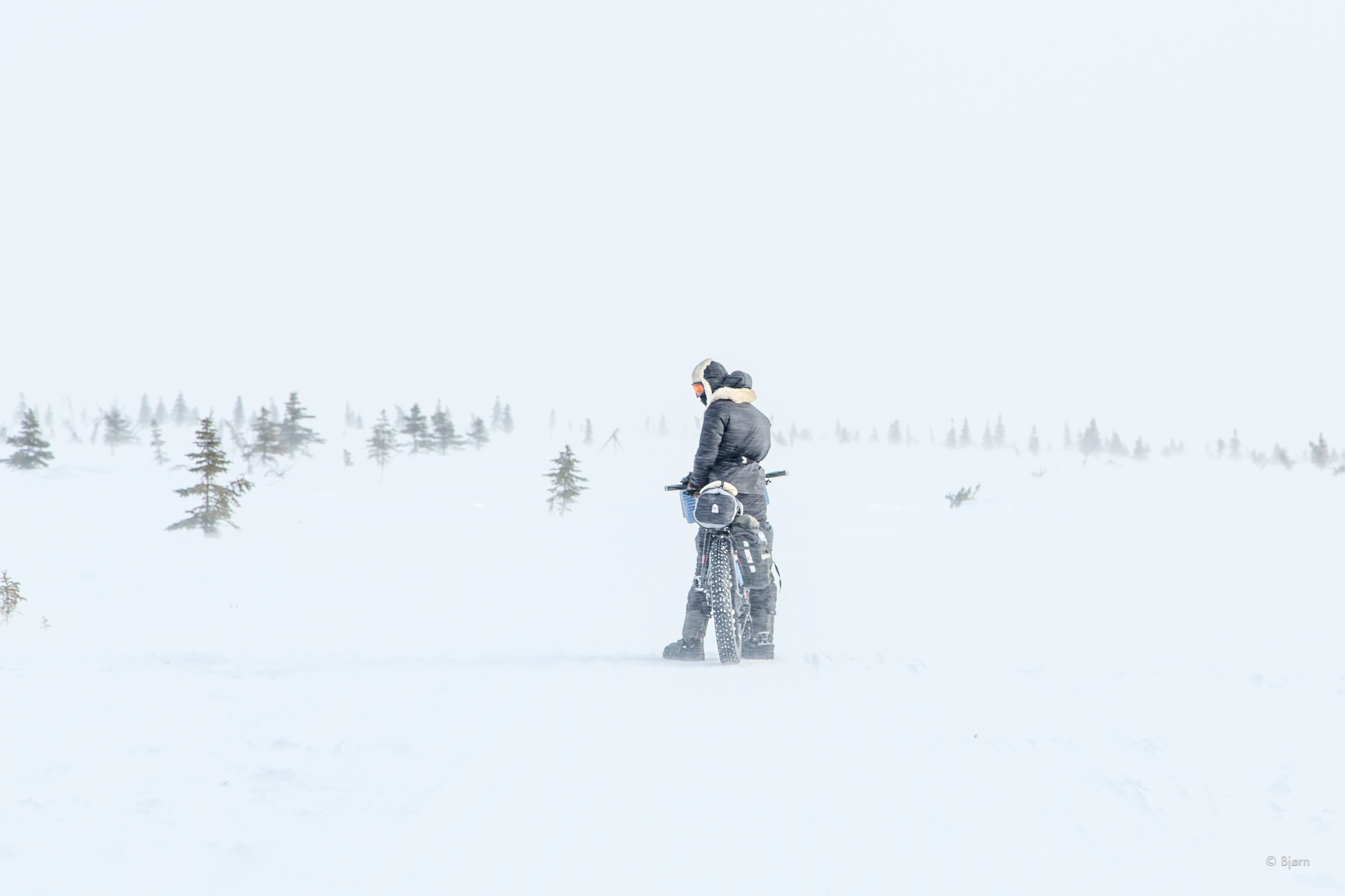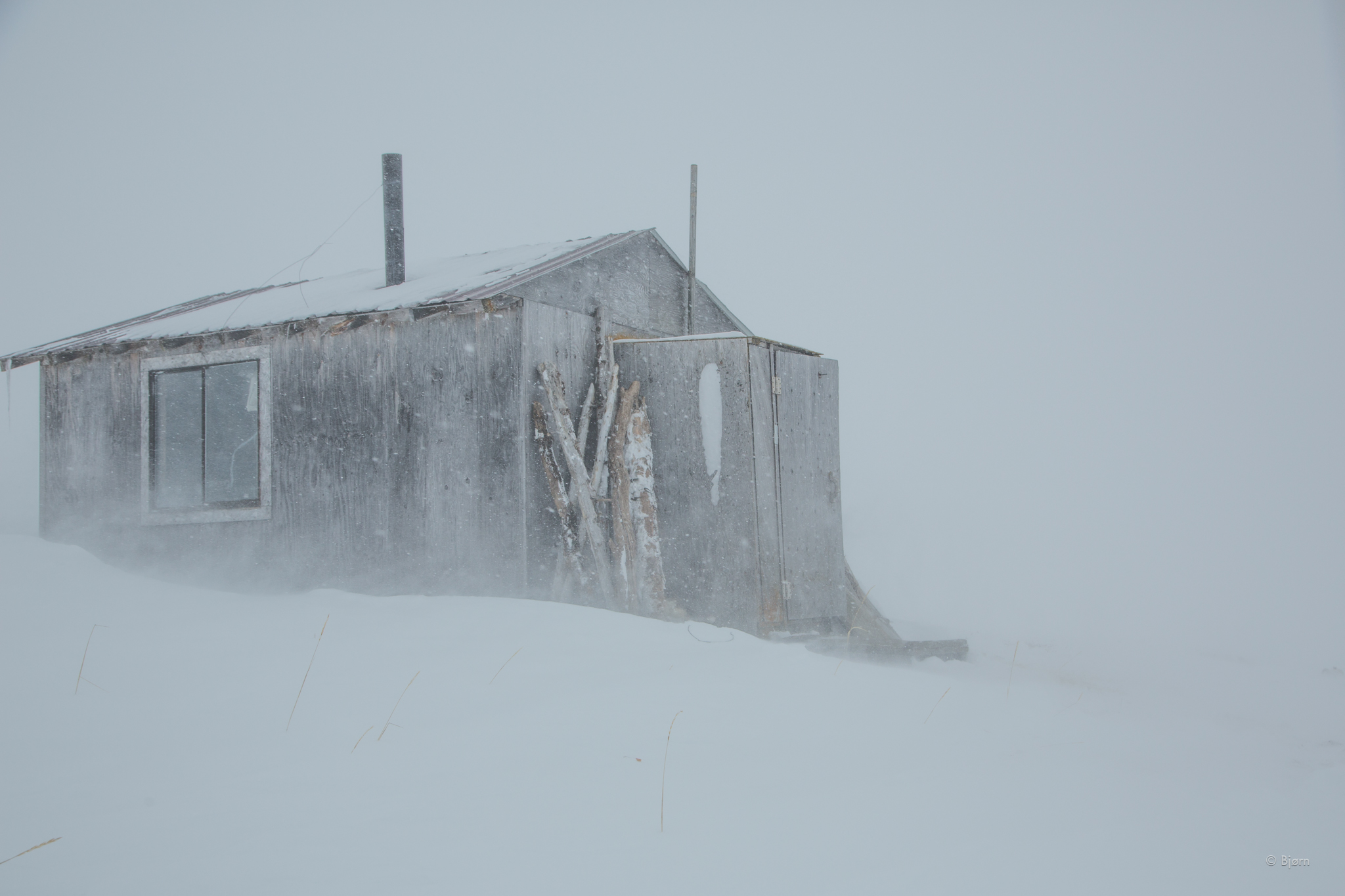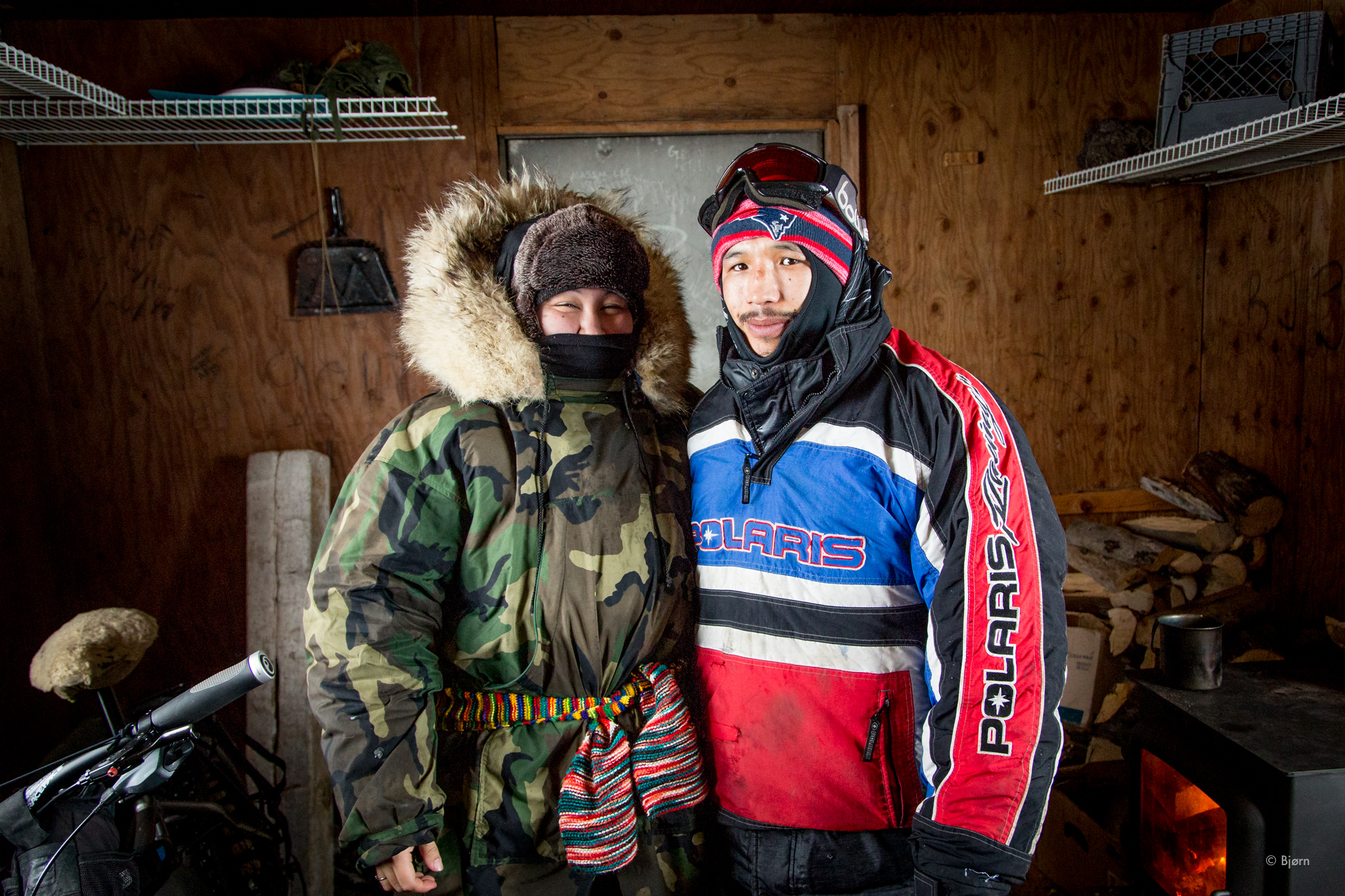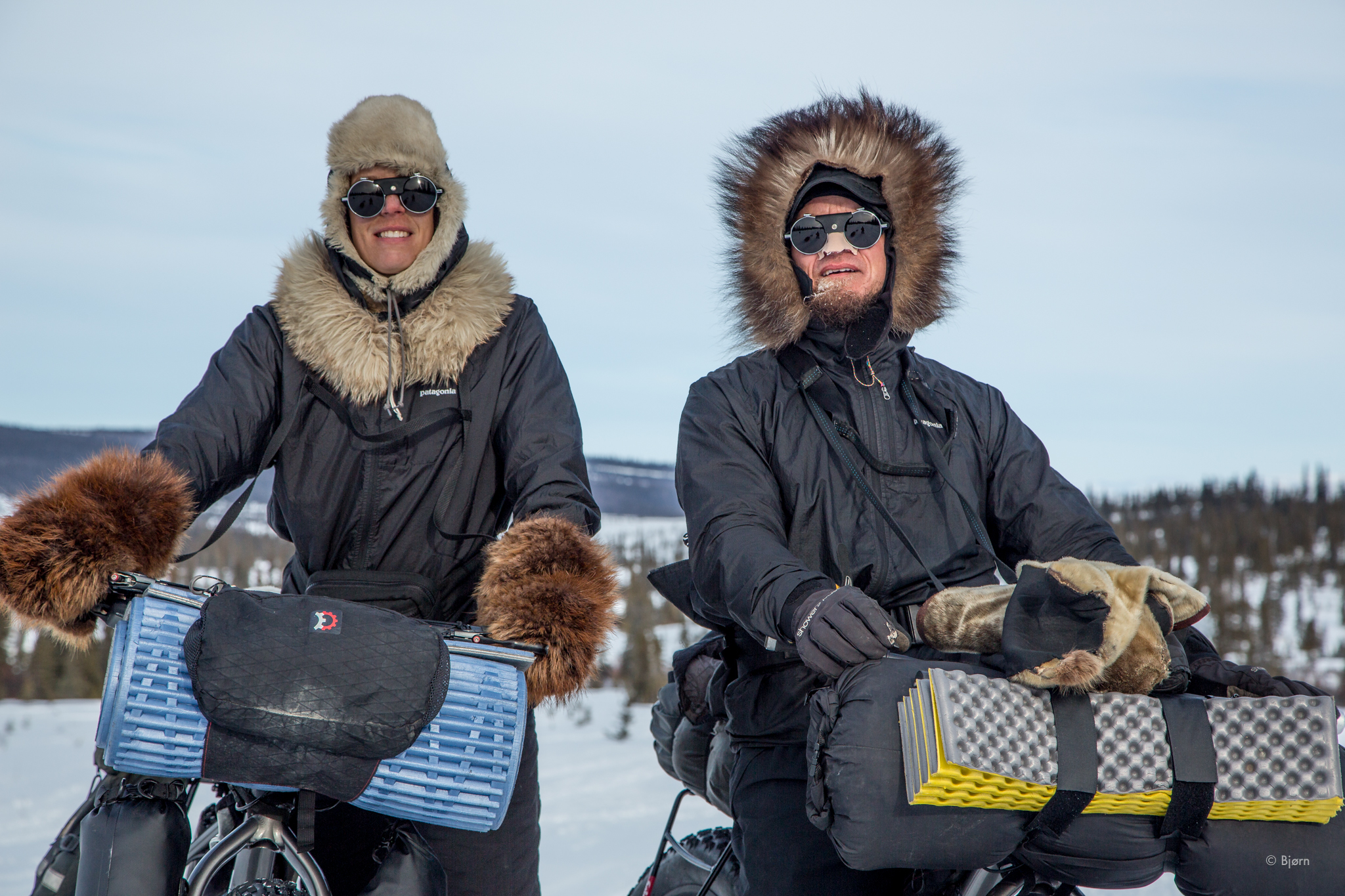When Arctic winds blow: From Nome to Kivalina on fat-tire bikes

(Bjørn Olson)
BUCKLAND — Some time during the night, the plywood-and-tin-roofed Callahan shelter cabin began to shudder and vibrate. The predicted storm had arrived. Wind assailed the little shack in gusty waves and drove fine, crystalline snow onto the walls and roof at hurricane speed.
We were less than 10 miles south of the Arctic Circle, experiencing the second, and most violent, storm of our fat-tire bike tour of Northwest Alaska. Cozily tucked into our sleeping bags we were grateful for making the decision to push onto the shelter cabin the previous evening — and blearily doubted we’d be traveling the next day.
I fell in love with the Northwest Arctic of Alaska in 2014. That spring, my partner Kim McNett and I rode the Iditarod Trail from Knik, near Anchorage, north to Norton Sound. In the village of Koyuk, we joined another trail, traveled over the Seward Peninsula and become the first people we know of to bicycle to the Arctic community of Kotzebue on a continuous 1,100-mile snow trail. On our flight home we began dreaming of new routes and plans to return.
Last March, we flew to Nome with the goal of riding to Kotzebue again and beyond, if possible. In the end, we made it as far as the coastal village of Kivalina, some 90 miles past Kotzebue before the trail petered out and rain destroyed what was left of the cold, stormy spring.

(Bjørn Olson)
Beyond the stark Pleistocene beauty of the region and often-reliable, and bikable, snowmachine trails that connect villages and communities, one of the strongest allures, for me, to this region of Alaska is its people. The Inupiat have been living in the Arctic of Alaska before the pyramids of Egypt were built. Over the millennia, Arctic people have developed technology, culture and attitudes that are beautiful reflections of humility, community, resiliency and fortitude in the face of a harsh climate.
The call of the trail for its own sake is strong within me, but adventure coupled with these interactions is particularly appealing.
Wild weather
Immediately out of Nome, Kim and I encountered the gamut of harsh, sub-arctic conditions: strong wind, driving snow, ground blizzards and the occasional dip to minus 30. Wild weather conditions persisted through much of our trip, and it became an easy, offhand summary, once back home.
“How was your trip?”
Answer: “Weathery.”
The morning Kim and I woke in the shelter cabin, light pierced through the single-pane windows and we caught our first glimpse of the white and treeless world being bombarded by wind-driven snow — a genuine arctic tempest. With plenty of firewood and a fresh resupply of food, we congratulated ourselves for making the prudent call of our previous day’s dash to safety. We could afford to sit this one out.

(Bjørn Olson)
By mid-morning we’d become used to the thunderous roar of wind and the nuanced sounds it made as it vibrated the shuddering roof or whistled through a crack in the window.
Around noon a new sound emerged, a distant rumble. Though hard to pinpoint or identify, it continued to build. “What is it?” Kim asked. We both held our breath and strained our ears as it grew louder. Finally, a snowmachine, coming off the sea ice and pulling a sled, emerged from the nebulous world of white.
Elephant Point crossing
Out the window we could see a man unwrapping tarps and blankets to reveal a bundled passenger in the long sled behind the machine. Kim and I looked at each other with mouths agape. How? What are they? No way!
It seemed impossible that anyone would be able to navigate the long, featureless crossing from Elephant Point, across the 10 miles of unmarked sea ice trail to the shelter under these conditions.
Glenn and Viola Thomas, from the village of Buckland, were on their way to Kotzebue for a city-league basketball game. “We finally got baby sitters and time off,” Viola said. “I’m not going to miss that game.” I admired her enthusiasm. A 100-mile snowmachine trip in the worst blizzard of the year wasn’t going to stop Viola from playing ball.
Both smoked a cigarette in the entryway as we warmed tea water. Once back inside, they removed heavy outer layers, sat down on the sleep-bench and we proceeded to drink tea and share stories. We talked of the trail, the weather, past experiences being caught out in foul weather and of the uncertainty that lay ahead. When the teacups were drained, they prepared to head back out.
No visible tripods
The trail from the Callahan shelter follows tripod markers across low hills of the treeless Baldwin Peninsula to the shore of Hotham Inlet, which locals call Kobuk Lake. On the far shore, the trail hugs the coast before diagonally crossing the peninsula, once again, to Kotzebue. Alternatively, in a whiteout, travelers can stay on the shore of Kobuk Lake and wrap around the tip of the peninsula to avoid getting lost.
“We should be fine,” said Glenn, as he donned his goggles and shook my hand. The storm had already made Viola late. “In the worst case, we can always find our way back here.” “Please, please do.” I said, “And be careful.”
Within a half an hour they were back. “I couldn’t see the tripods at all,” Glenn said. Without the markers to guide him, all of the undulating landscape looked the same in the whiteout.
“I decided we better follow our track back to the shelter before the wind erased it.” Kim and I were relieved they’d made the decision to return and more than happy for the company.
“If we don’t make it to Kotzebue by evening, people will start searching for us,” Viola worryingly said. “We can send a satellite email with our inReach to a friend, with your parents’ phone number,” I offered. “Our friend can call and let them know you’re safe.” The little satellite texting and tracking device had saved me and Kim the summer before and we no longer leave on long, remote trips without it.

(Bjørn Olson)
In a few minutes the inReach twittered its response alert. “No problem. Will do,” the return message said. With everyone comfortable in the shelter and families advised of Glenn and Viola’s safety, the stress of the storm diminished even as it continued to rage outside.
We cooked a big meal of noodles and talked well into the night before finally bedding down. What tomorrow would bring was anyone’s guess.
Roaring wind continued to assail the shelter but it was a cold draft on my face that woke me, as two men entered the shelter in the dark of night. “Glenn, you in here?” a soft voice asked. “Yea,” came the sleepy reply. “Your dad sent us with gas, food and a thermos of coffee,” one of them said.
In the pitch dark, the men had a soft and sparse conversation — in the typical cadence of the modest and reserved Inupiaq hunter. After Glenn’s dad received the phone call, alerting him that everyone was safe, he’d gone to some of the young men of the village and asked if any would be willing to bring supplies to his son and stepdaughter. The two black silhouettes that stood in the middle of the room were the brave souls that had answered the call.
“I had to stand up over the windshield to see the old tracks,” one of the men said. “Hard to find in all this wind.”
Self-reliant
A lump grew in my throat as I listened to them talk about how difficult it had been for them to find the shelter in the storm at night. “We always look out for our people,” one of them said.
A few minutes later the two men returned to the relentless blizzard, fired up their machines and began the long, uncertain trip home.
Since my late teens, I have always accepted the wisdom of my elders about time spent out in the country. One of the staunchest rules is to be self-reliant; never require assistance or saving. To require a rescue is to put other lives at risk and is often costly. Because of that, some consider adventure frivolous and egocentric, without purpose for society.

(Klaus Schweinberger)
Listening to the men’s machines fade into the storm I realized that here, people have a different mentality about rescue and about the value of spending time out in the country. Time on the land nurtures. Subsistence food gathering nourishes but the time outdoors is good for its own sake, too. It is good for the soul and one’s physical and mental well-being to be connected to the land.
But, being out in the country can also be dangerous. Consequently, northern societies have learned to work together.
Two days after the storm, Kim and I pushed our bikes along Kobuk Lake through the new snow when Raymond Lee, another Buckland resident snowmachining to Kotzebue, stopped to talk to us. He informed us that the trail would soon be improving and he told us stories of the mythical creatures that he and his ancestors believed inhabited these parts.
When the conversation turned to search and rescue Lee said, “I always go out looking when someone is missing. I go every time. Because I want everyone that I help to come looking for me, if I’m ever in trouble.”
Bjorn Olson, 42, is a lifelong Alaskan born in an abandoned trapper’s cabin near the village of Mentasta, now living in Homer. In his late teens, he discovered mountaineering and has since explored Alaska by kayak, fat-tire bike and packraft. Over the last dozen years, he’s completed a number of original routes, including Cook Inlet to Bristol Bay, Anchorage to Kotzebue, and Nome to Kivalina to name a few.